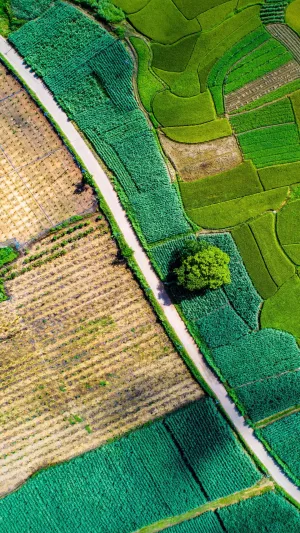Cultivated land refers to soil that has been modified and optimized by human activities for agricultural production. It is a critical resource, serving as the foundation for crop growth and human sustenance.
Cultivated land is not just a product of human labour but also a fundamental element in the agricultural production process, supporting the survival and development of human societies.
Historically, humans discovered that they could harness the land to increase their energy output, leading to greater food production, a larger population, and overall societal growth. This process created a positive feedback loop: increased crop yields led to more food, which supported a larger population. As the population grew, new tools and techniques emerged, allowing for further expansion of cultivated land and energy production. This cycle has persisted for over 10,000 years but has faced significant challenges along the way.
Cultivated land serves as an irreplaceable asset in agriculture, influencing labour, production factors, and spatial utilization. According to UNESCO, the global area of arable land increased from 1.279 billion hectares in 1961 to 1.730 billion hectares in 2015. Notably, from 1990 to 2015, the world's arable land expanded by 19.02%.
Despite this increase in total arable land, the per capita availability of cultivated land has decreased significantly. In 1961, the average per capita cultivated land was 0.415 hectares, which declined to 0.265 hectares by 1990 and further reduced to 0.26 hectares by 2015. This represents a 37.35% decrease in per capita arable land over this period, a trend closely linked to global population growth.
Land remains a crucial source of social wealth. Currently, cultivated land produces 88% of all food, 84% of natural fibres, and most other agricultural raw materials. Historically, the expansion of cultivated land played a major role in the advancement of production.
However, since the Industrial Revolution, agricultural technology has significantly improved, leading to higher and more stable yields per unit area. As a result, many developed countries have seen a reduction in cultivated land due to various factors, including urbanization and industrial development.
In contrast, developing countries continue to rely on expanding cultivated land as a primary method for advancing agricultural production. Limited technological and economic resources often restrict their ability to increase productivity through other means. The amount of arable land a country possesses can indicate its agricultural potential, but it does not guarantee that a country will easily avoid food crises.
Today, the issues of population growth, food security, and resource management are becoming increasingly pressing on the global stage. The dynamics of cultivated land—its expansion, utilization, and sustainability—remain central to addressing these challenges and ensuring future food security. The management and optimization of cultivated land are vital for balancing the needs of a growing population with the preservation of natural resources.





